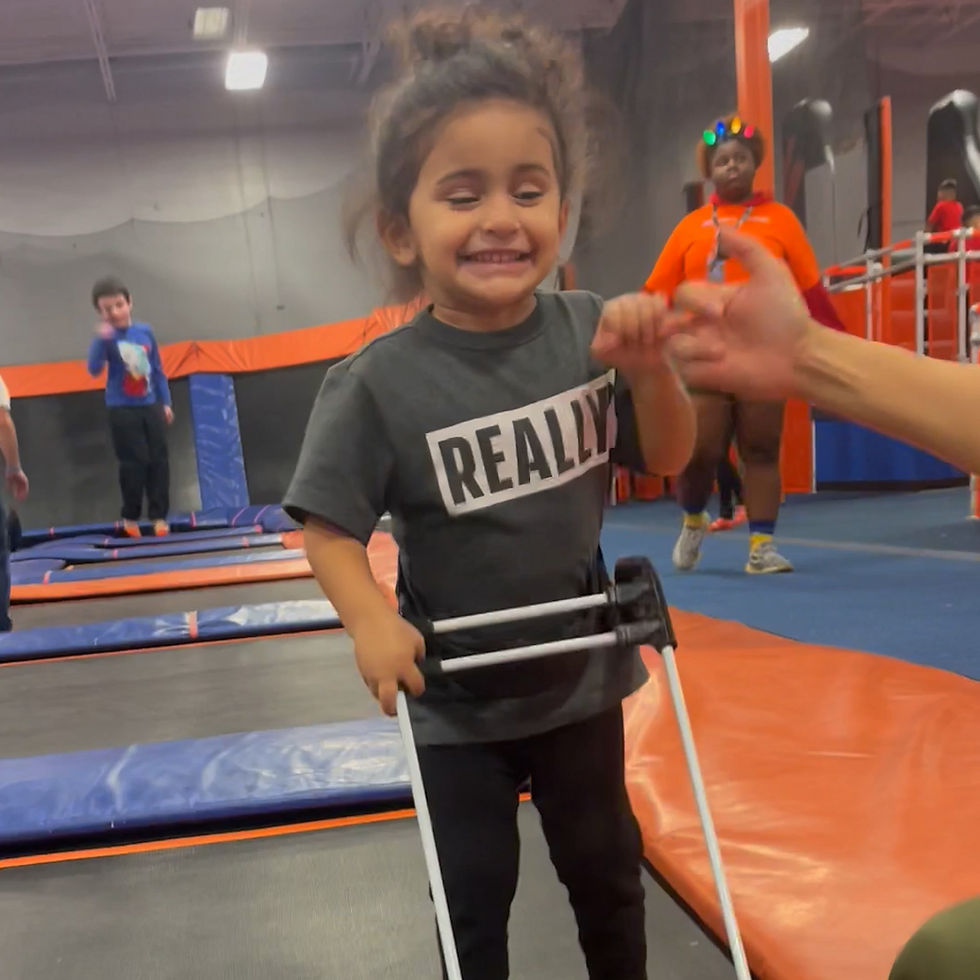Empowering Independence: Chores for Children with Visual Impairments
- Grace Ambrose-Zaken

- Sep 22
- 3 min read
Updated: Oct 7
The Role of the Pediatric Belt Cane
The Pediatric Belt Cane is more than just a mobility tool; it’s a gateway to independence. This device allows children to navigate their surroundings confidently. As they learn to use it, they can engage in various activities, including chores. Chores are not just tasks; they are opportunities for learning and growth.
1. Start with Structure and Consistency
Children with visual impairments thrive when environments are predictable. With the Belt Cane, your child already knows where objects and walls begin, giving them a spatial map to move freely and safely. Use this mobility advantage by establishing consistent locations for chores and tools:
Toys go in the same basket every time.
Dirty clothes always go into the same hamper.
Shoes have their own dedicated place near the door.
Use clear, consistent language when giving directions: "Walk forward until you feel the rug, then turn left. Your toy box is against that wall."
2. Direct Instruction is Key
Children who are blind cannot learn by observation—everything must be taught directly. Model each chore with your hands on theirs at first (hand-under-hand technique), narrating as you go:
“Let’s put your shirt in the laundry basket. Here’s the basket rim. Now drop the shirt in. Hear it fall? That’s how we know it’s in.”
Once they’ve had a few turns with your guidance, encourage them to try independently.
Praise their effort, not just the result: “You remembered where the basket is! Great job walking there on your own.”
3. Chores to Introduce Early (Ages 2–5)
The Belt Cane allows children to explore and approach task locations confidently. Here are some starter chores that encourage both mobility and self-care:
Putting away toys in labeled bins or baskets
Placing dirty clothes in a hamper
Wiping a table or placemat with a damp cloth
Bringing dishes to the sink or counter (use unbreakable materials)
Feeding a pet using tactile markers for bowl placement
Watering plants with a measured cup
Make these tasks part of a daily routine, so they become habits over time.
4. Make Use of Landmarks and Orientation
Children using the Belt Cane naturally begin to build a mental map of their home. Encourage this by labeling key areas with tactile or auditory markers:
A rug by the sink
A bell on the laundry hamper
A textured mat by the toy shelf

These cues support spatial orientation and make it easier for your child to find task locations independently.
5. Celebrate Progress and Promote Pride
Every chore completed is a step toward independence. Celebrate small wins:
“You wiped the table all by yourself!”
“Your shoes are in the right spot—high five!”
Use verbal praise, songs, or even a chore chart with tactile tokens or Velcro pieces to track daily tasks.
6. Teach, Repeat, and Trust the Process
Just like walking with a Belt Cane became second nature through daily practice, chores will too. The goal is not perfection—it’s participation and progress. By involving your child in household tasks, you show them that they are capable, valued members of the family.
Over time, they’ll move from needing your full guidance to doing things on their own with confidence. And it all starts with consistent routines, clear teaching, and the freedom to explore safely—thanks to the Pediatric Belt Cane.
Conclusion
Mobility is empowerment, and with the Pediatric Belt Cane, your child is ready to take on the world—one chore at a time. Teaching life skills to children with visual impairments isn’t just about helping them "get by"—it's about helping them thrive with independence, confidence, and joy in every step.
💡 Want to learn more about the Pediatric Belt Cane and how it helps children who are blind explore their world safely?
👉 Learn More safetoddles.org or Shop Now safetoddles.org/shop








Comments